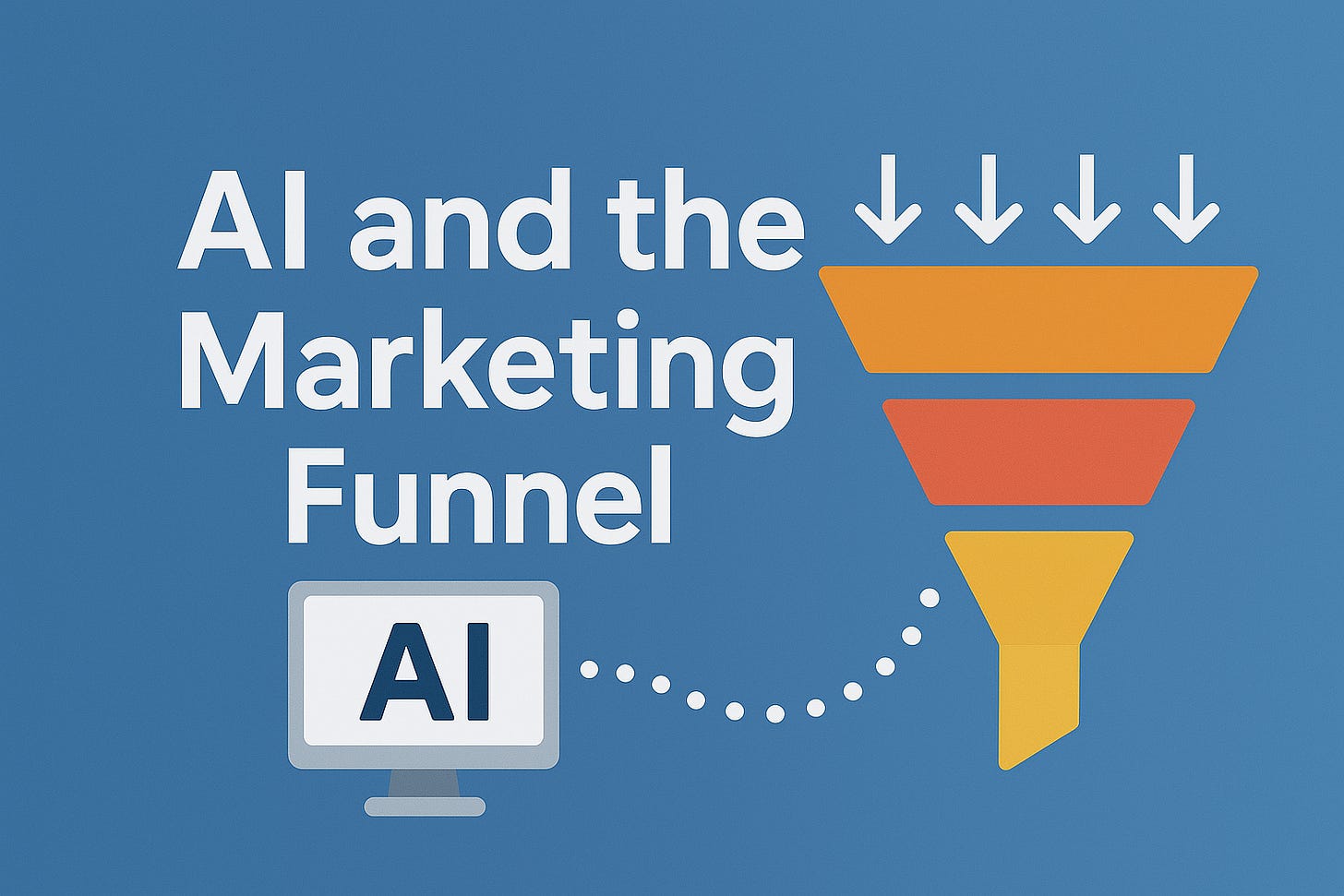How AI is Redefining the Traditional Marketing Funnel
The traditional marketing funnel is dying, but not because it stopped working. It's evolving into something more powerful, more responsive, and frankly, barely recognisable from its predecessor.
AI tools aren't just optimizing the existing go-to-market playbook - they're fundamentally rewriting it.
The Death of Linear Customer Journeys
The classic Awareness → Consideration → Decision funnel has served marketers for decades. But this linear journey assumes something increasingly untrue: that customers move in a predictable, sequential flow toward purchase.
Modern buyers research, compare, disengage, and reengage across multiple channels simultaneously. They're now choosing their own adventure, not following your carefully designed path.
AI-augmented GTM strategies recognize this chaos and embrace it.
Here's how:
The New Marketing: A Network of Experiences
Leading companies are replacing the funnel with a network of connected experiences. AI helps create personal journeys that adjust based on what each customer does.
Key parts of this approach:
1. Entry Points Everywhere
Old way: Focus on top-of-funnel content to create leads that flow downward.
New way: Every piece of content, product interaction, and customer service touchpoint can lead to a sale.
2. Content That Adapts
Old way: Fixed content created for specific funnel stages.
New way: Content that changes based on how the visitor behaves.
3. Conversations Instead of Forms
Old way: Forms collect information, humans follow up days later.
New way: AI chatbots have instant, helpful conversations and connect to sales when needed.
Market leaders are replacing lead capture forms with conversational AI that can:
Answer detailed product questions immediately
Qualify prospects in real-time
Schedule demos with the right sales team members
Capture richer qualification data than forms ever could
These systems adapt their qualification approach based on the prospect's responses, creating a dynamic qualification path instead of a static form.
Transforming the Middle Funnel
This middle stage is where AI makes the biggest difference, fixing the classic "black hole" where leads often disappear.
1. Smart Content Sequences
Old way: Preset email sequences sent on a fixed schedule.
New way: AI delivers content based on how people actually behave.
AI-augmented systems analyze:
Content consumption patterns (what topics and formats engage each prospect)
Engagement velocity (how quickly they're consuming information)
Competitive research signals (are they also researching alternatives?)
This creates dynamically generated "next best content" recommendations that significantly increase pipeline velocity compared to traditional nurture sequences.
2. Small Steps That Predict Success
Old way: Focus on big conversion points like demo requests.
New way: AI tracks many small actions to predict who will buy.
I`ve seen market leaders are now tracking 15-25 micro-conversion signals that correlate with eventual purchase, using AI to identify which combinations are most predictive for different customer segments.
3. Smart Channel Switching
Old way: Each channel (email, social, ads) works separately.
New way: AI coordinates outreach across channels based on how customers respond.
Companies now use AI to orchestrate channel switching based on engagement patterns. When a prospect shows high intent but stops engaging with emails, systems automatically switch to LinkedIn outreach or targeted display advertising, maintaining conversation continuity across channels.
Bottom Funnel: From Demo to Decision
The decision stage has changed from a sales-driven process to a smart collaboration between prospect and company.
1. Custom-Built Demos
Old way: Standard demo script slightly adjusted by the sales rep.
New way: AI builds demo environments based on what the prospect has shown interest in.
Enterprise software companies are now using AI to analyze all pre-demo interactions and automatically configure personalized demo environments that highlight the features and use cases each prospect has shown interest in.
2. Getting Ahead of Objections
Old way: Sales reps react to objections as they come up.
New way: AI predicts likely concerns before the sales call.
You can use AI to identify which objections each prospect is likely to raise based on their content consumption patterns. These systems analyze which competitors a prospect has researched and pre-arm sales reps with specific competitive differentiation points before calls.
3. Spotting Upsell Opportunities
Old way: Customer success takes over after purchase.
New way: AI watches usage patterns to spot when customers are ready for more.
The new playbook extends beyond initial purchase to map customer behavior to likely expansion opportunities. Companies now use AI to analyze feature usage patterns and identify accounts showing behavior patterns that indicate readiness for specific upsell modules.
How to Implement This Approach
For companies looking to adopt these methods, start with these steps:
1. List Your Customer Signals
Make a list of all the customer behavior you track across your:
Website activity
Content engagement
Product usage (if you have a product)
Support interactions
Sales conversations
Find gaps where you're missing valuable signals.
2. Connect Behavior to Results
Link past behavior patterns to actual outcomes:
Which actions led to purchases?
Which patterns showed customers went to competitors?
What behaviors predicted successful upsells?
This data helps train AI to make better predictions.
3. Map Your Customer Journey Network
Map all possible entry points and paths, moving from linear funnel thinking to a network of connected experiences where:
Each touchpoint can lead to multiple next steps
Content changes based on past engagement
Conversations can start anywhere in the journey
4. Add AI Tools Step by Step
Don't try to change everything at once. Add AI in phases:
Content that changes based on behavior
AI chatbots at key decision points
AI-coordinated outreach across channels
AI scoring of prospects
Fully AI-powered customer journeys
Today's buyers want immediate, relevant, personal experiences. The old rigid marketing funnel can't deliver this. AI creates systems that learn with every customer interaction, helping companies pull ahead of competitors.
The old approach asked: "How do we move prospects through our stages?"
The AI approach asks: "How do we adapt to how each customer wants to buy?"


